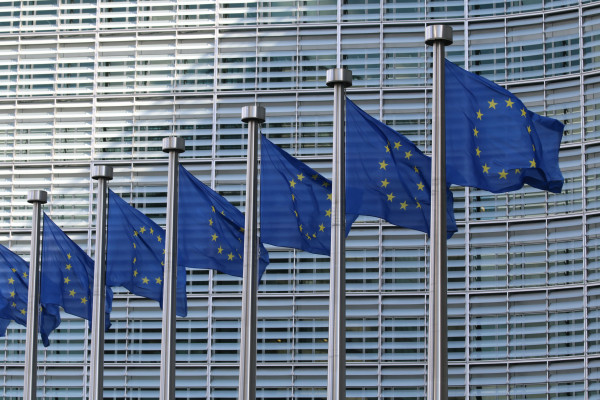
Rebranding After a Reputational Crisis: A Roadmap to Redemption
Branding is an essential element of any business's identity. It's the first impression you make on your stakeholders and plays a significant role in building trust and loyalty. Maintaining a strong brand presence is essential for long-term success.
Occasionally, due to external factors, your brand’s perception may undergo a transformation. Whether it’s a scandal, changing societal perspectives, ineffective marketing efforts, or a poor business decision, rebranding your business can serve as a remedy for realignment.
No matter your business or the specifics of the issue, a new brand can showcase a more responsible, sustainable, and forward-looking approach, giving audiences a chance to reconnect with your business following a re-alignment and re-prioritising of the values your brand represents.
However, rebranding during a crisis also means the stakes are a lot higher. To ensure the rebrand is part of the solution when it comes to rebuilding your reputation businesses need to ensure they are being able to stand over their approach: rebranding can be part of the solution but should never be approached as the easy way out of an issue.
In this blog post, we will explore the steps and strategies to successfully navigate the delicate process of rebranding amid a reputational crisis.
Crisis Management & Reputation
Depending on the context, rebranding can sometimes be an effective part of how a company chooses to address a crisis as it entails altering the way you present your brand to the public. But rebranding is a weighty decision that requires careful consideration. It not only demands a significant investment of time and finances but also places your company's reputation on the line if the execution falls short.
Here are some simple steps to guide you through the rebranding process:
1. Acknowledge the crisis
Any rebranding process begins with admitting the issue and accepting accountability for the errors that caused it. Downplaying the issue will only worsen the problem and destroy the public’s trust even further. Rebuilding credibility requires a sincere apology to the public, an acknowledgment of the company's misbehaviour and a clear explanation for how the new brand is part of a new chapter moving forward. It is also important to highlight to all your stakeholders that the new brand is part of the solution, the visible pinnacle of a much broader process that underpins substantiated and trackable change.
2. Research
Research your target audience, competitors and market trends. Ensure to analyse your old brand’s strengths and weaknesses to identify areas for improvement and understand the values you now need to better align yourself with. If you can, allow your most vital stakeholders a say in how they think you should re-position your business and your brand.
3. Develop a new visual identity
Indeed, rebranding should be more than just a superficial makeover. It should be an opportunity to redefine your company's core values. What does your organisation stand for now, and how will it be different from before? Your new brand identity should reflect your commitment to change and improvement.
Collaborate with a branding agency to develop a suite of new visual elements such as a new logo, colour palette, typography and so on. Ensure that your new visual identity aligns with your brand's values and goals. Update your website and social media profiles as well as printed collateral to reflect the new branding design.
Marlboro's parent company, Phillip Morris Companies Inc., underwent a major corporate rebranding in 2003. This transformation included the adoption of the name "Altria Group" and a change in the company’s visual identity. The objective was to shift towards being perceived as a socially responsible corporation, responding to continuous criticisms linked to its ownership of tobacco brands. Through this rebranding initiative, Altria sought to cultivate a corporate identity that was less stigmatised. This strategy proved successful in enhancing the company's public image and created distance from a string of tobacco-related controversies at the time.
4. Communicate transparently
Now that you've laid the foundation for a fresh brand strategy and identity, it's time to breathe life into it through comprehensive communication, both within your organisation and to external audiences.
Internally, focus on depth rather than breadth in your communication plan. Implement a well-thought-out, bilateral communication strategy that reaches every department, ensuring that all employees grasp their role in embodying the rebrand and bringing it to life. Your organisation’s culture should reflect the new brand and vice-versa.
Once you’re ready to take things externally, make sure to be conscientious and proactive in addressing various stakeholder groups. Assist them in grasping the essence of your new brand, its updated values, offerings, and how it proposes a new path going forward. This way, your stakeholders can recognise that your brand transformation goes beyond surface changes.
5. Evaluate and adjust
Monitor the success of your rebranding efforts, listen to feedback from customers and make adjustments as needed.
6. Rebuild trust over time
Restoring trust is a gradual process with no quick fixes. The essential element for a successful rebranding following a reputation crisis is to consistently show your dedication to the new brand identity, transparency, and ongoing enhancement. As time goes by, your stakeholders will observe your unwavering commitment, and in return, they will respond with renewed trust and loyalty.
ValuJet, a low-cost airline, successfully rebuilt public trust through a strategic rebranding effort following a significant aviation incident that deeply impacted the company's reputation and operations. The initial step involved a merger with a company possessing a more robust reputation and corporate identity, which enabled the airline to symbolise a fresh beginning. Additionally, ValuJet implemented heightened safety measures, enhanced communication and transparency between customers and staff, and ensured that employees underwent rigorous training in order to instil a culture of safety and excellence in customer service.
These measures collectively aided AirTran, the new ValuJet, in recuperating the trust of passengers and the aviation industry and also contributed to the successful restoration of ValuJet's reputation as a safe a reliable low-cost carrier.
Rebuilding a brand after a reputational crisis is not just about a new logo or tagline; it's a comprehensive process of change, reflection, and growth. By acknowledging mistakes, defining a new brand identity, and communicating transparently, companies can regain trust and emerge from a reputational crisis stronger and more resilient. It’s important to remember that redemption is possible, and a well-executed rebrand can lead to a brighter future for your organisation.
Ciara Broujos is a creative designer and leads Reputation Inc’s in-house Creative Design Studio. Ciara is passionate about solving design problems at any scale for a range of national and international clients.


